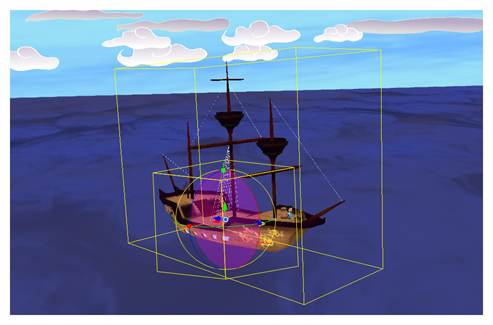About 3D Integration
Harmony is able to integrate 3D models into your animation. Like 3D-enabled elements, you can animate a 3D model on its geometry by translating it, rotating it or scaling it on the X, Y and Z axes. Using a Subnode Animation node, you can also animate the individual parts (subnodes) of a 3D model separately.

By default, a 3D model in a Harmony scene will be rendered using OpenGL, which is unlikely to render in the desired quality. To properly render a 3D model, you must configure your scene to render the model through Autodesk Maya. When properly set up, Harmony will seamlessly make Maya render the 3D model, then composite the rendered image into the final render of the scene. For more information, see About 3D Rendering in Harmony.